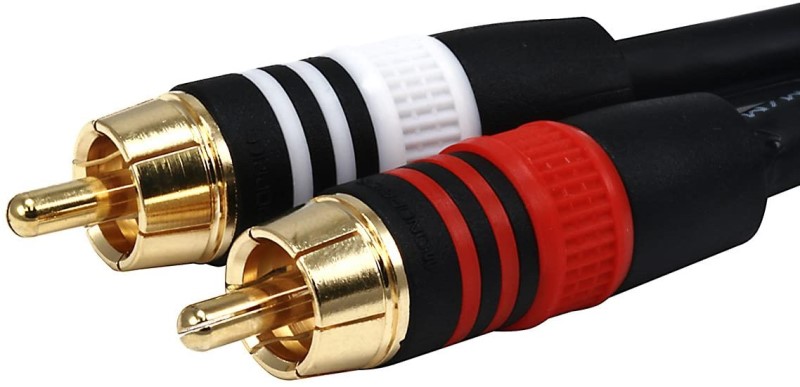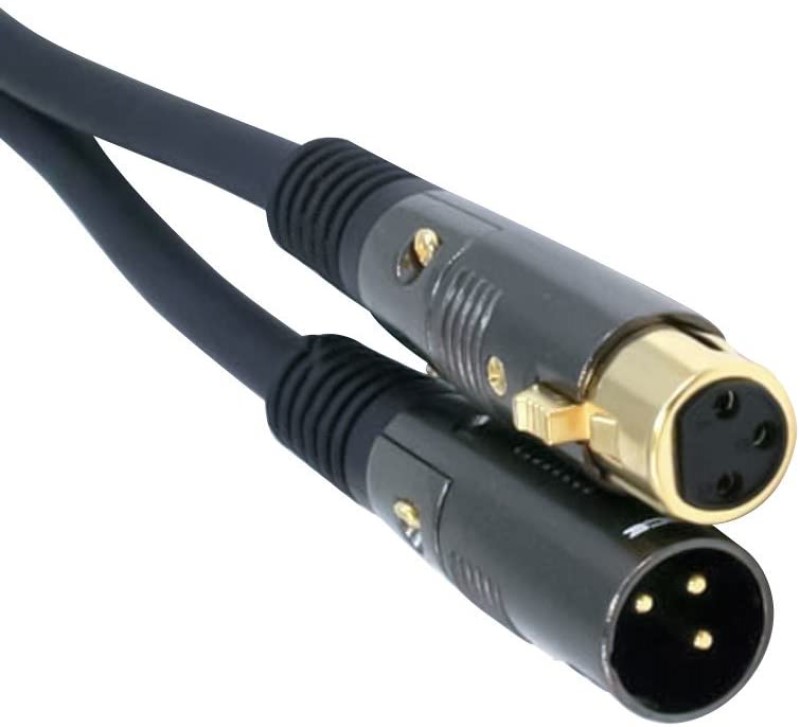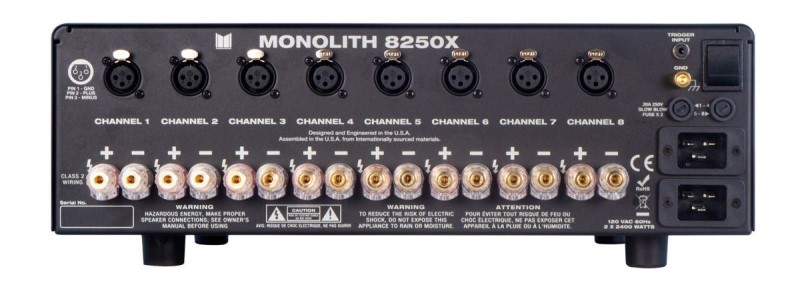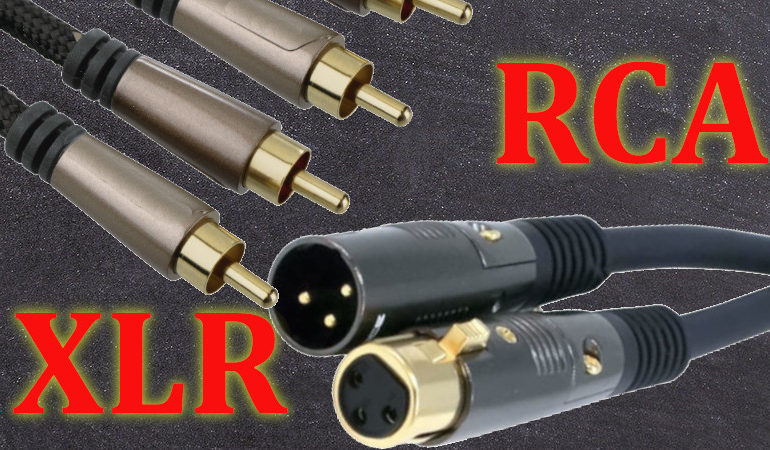XLR vs RCA – Which Cable is Better?
You’re considering buying an external amplifier for you home theater system. Maybe for your two-channel system. You’ve heard that it makes your speakers sound better (it doesn’t). Plus, they look cool (that is true). But you’ve run into an unexpected decision. Some amps have only RCA connections while others offer XLR (and usually RCA as well). Is there any reason that one cable (XLR vs RCA) would be better than the other?
What are the Differences Between XLR vs RCA Cables?
Obviously, there are two different connections at the ends of the cables. The RCA cable has a friction-fit termination that many of us are very familiar with. You simply push it into the port and friction keeps it in place. Some RCA cables can be quite thin while others can be thicker.

XLR cables have a completely different connection at the end. They are round and they lock into place. One side has three holes while the other has three prongs. This means that you can only connect them in one direction. The RCA cables, on the other hand, can be connected either way. XLR cables are always fairly thick.
Balanced vs Unbalanced
The real difference between the XLR vs RCA cables is how they work. An RCA cable has a single wire down the center that carries the electrical signal. Thicker RCA cables have a robust shield around that cable. The thinner cables only have a plastic jacket. The nicer RCA cables (the ones you’d use for a subwoofer or connecting to an amplifier) would be thicker and have the shielding. The RCA cable is what we call unbalanced because it has a single wire.

XLR cables are different. Inside, you’ll find three wires – positive, negative, and ground. When an audio signal is conveyed by an XLR cable, it is actually sent twice simultaneously. Both the positive and negative wires carry the audio signal. But one signal is inverted before it is sent. When it arrives at the other side of the cable, the inverted signal is flipped again. This will cancel out any noise or external interference that may have leached into the cable as the signal passed through. The noise would have affected both the regular and inverted signals equally. Flipping one at the end cancels out the noise and you end up with the original audio signal. This is why XLR cables are considered balanced.
A Balanced Cable Must Be Better, Right?
You’d think so. Making sure any unwanted noise that may have crept into your cable is eradicated sounds like a good thing. But let’s not forget about the RCA cable’s shielding. That shielding (also present on the XLR cables) is designed to protect against external noise. Now, you can find a lot of people online claiming that it can still get in. EMF, RF, static electricity…there are a lot of claims out there. But most of those claims come from either people that sell high-end cables (and they aren’t selling XLR mostly) or those that have bought them.

When is an XLR Cable Needed
If you are running microphone (which are XLR) cables in a high electromagnetic noise environment, the general rule of thumb is anything over 40 feet should be XLR. A live musical show with tons of cable laying on top of each other with speakers and amps and other devices that might create such noise would qualify. At home, where there just isn’t that much EMF noise, you could probably not experience noise issues until 300 feet.
XLR vs RCA Cable Wrap Up
Listen, XLR cables aren’t expensive. If you have an amp with XLR inputs and a pre-amp with XLR outputs, feel free to use them. Where the problem arises is when someone is looking to spend more money just to get XLR connections because the Internet said they were better. Sonically, there is very little (I’d say NONE but I’m sure there is an instance somewhere) chance that a well-built RCA cable is going to pick up any noise. Save the money and get the amp with RCA inputs. That way you can pair it with any AV receiver with pre-outs. You can use the money you save to get some room treatments or maybe a second subwoofer. Those will make a lot more sonic difference than XLR cables.



For 99.9% of home audio/theater users the only thing using balanced cables are good for is likely thinning out your wallet of more cash.
For professional installs of LONG cable runs then yes balanced cables are a good thing, but for the typical home user they are a waste of time and likely money.
My personal experience with XLR vs. RCA has proven XLR to be far superior as far as completely eliminating unwanted audible noise I had been experiencing using several different high quality RCA cables which made no difference or improvement between one or the other. Switched to XLR and nothing but silence and clear signal path. This was just my own experience but I confidently believe XLR to be worth the investment.